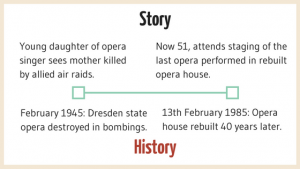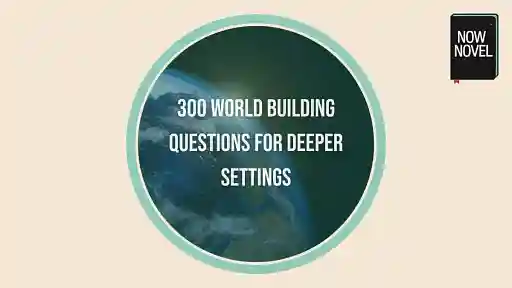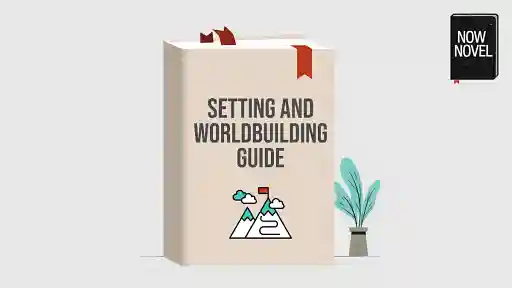Setting is the time and place that forms the backdrop for your story. Good novel settings require imaginative and vivid description. Immerse your readers in a mesmerizing fictional world and they will want to turn the page, not close the book. Here are 7 simple tips for getting your setting description right:
- Do quick research for your novel's setting and summarize key points
- Focus on what details matter in period vs contemporary story settings
- Combine and use all the senses in your descriptions
- Take notes on places you visit: What makes them interesting or surprising?
- Keep a journal of memorable setting descriptions
- Create a visual album to inspire you when you write about time and place
- Create a setting timeline for your fictional world
Let's unpack these ideas a little more:
1: Do quick research for your novel's setting and summarise key points
If you're writing a historical novel based on true events (or the history of your fictional world is a key element of the story), do quick research. Use a variety of online sources to find facts and interesting events. If you haven't visited a real place you're writing about, Google image search is a useful starting point.
For example you could search 'Rome + fountain' if setting a scene near a fountain in the Italian city. Or else 'Rome + night' if you plan to describe the lights of the city or a dark, cobbled street.
What if you want to know historical or contemporary facts about a specific story setting?
- Use Wikipedia to get a basic idea of your setting. (But fact-check: it's always best to use the most credible sources. University (.edu) pages and official online encyclopedias that undergo rigorous editorial process are usually the most reliable.)
- Skim authoritive non-fiction books for facts and details you can use. Comprehensive travel guides (such as the Lonely Planet series) are useful for learning details about contemporary settings
Summarize all your findings about your setting (if it is a real present or historical place). Keep your setting facts and visual references in a dedicated folder and categorize them (e.g. 'Architecture'). This will make is easy to look up a useful detail at a moment's notice.
2: Focus on what details matter in period vs contemporary story settings
In a period setting such as Victorian England, there are many details of time and place that help create a vivid setting. Elements that will place your story firmly in this time and place include:
- Clothing descriptions: What would central characters or passersby in the street wear? Victorian Web, for example, has a detailed guide to Victorian dress that states that bonnets fell out of fashion in the 1890s but were still worn by elderly ladies
- Architecture: What does a typical home or place of business look like?
- Environmental details: What is striking about your setting's environment? For example, prior to modern plumbing, sewerage disposal left a lot to be desired!
- Speech and mannerisms: How would people typically behave and speak in your time and place? Reading texts written during Victorian times, for example, can give you some idea for the formal and informal patterns of how people of a certain social group or status expressed themselves
- Cultural and political backdrop: If you plan to set your story during a turbulent historical period, such as the French Revolution (for example), keep a timeline of historical events that coincide with the events of your story. This will help you to describe your setting with greater authenticity
If you're writing about a contemporary setting, however, some details are perhaps less important.
Clothing descriptions can describe characters (e.g. shabby dress to suggest a character's dire economic situation). Yet in a contemporary setting such as present-day London, your characters' clothing is less important than if you were describing London in the 1800s. This is because you are not necessarily trying to show a time and place with fashions and cultural obsessions extremely different from your own.
In a contemporary setting, there is less burden on detail to convey an accurate sense of a specific era. Still, there are certain elements of time and place the average reader will expect. Characters should speak, for example, in language native to their place and time. A character in a contemporary setting who addresses others using archaic terms such as 'thee' and thou' would obviously be out of place, unless this were an intentional, explicable anachronism.
If writing about a real contemporary time and place, use Google's 'News' search to find area-specific stories from local papers. You may find some gems that help you understand the local character and concerns of a region.
3: Combine and use all the senses in your descriptions
Using all the senses makes setting description vivid and more memorable. The briny smell of a harbour is as distinctive as the sweet and damp smell of a pine forest. Where fitting, use multiple senses - especially sound and smell - to bring your settings to life.
For example, here is Jeffrey Eugenides describing the university town in his campus novel The Marriage Plot (2011):
'All over College Hill, in the geometric gardens of the Georgian mansions, the magnolia-scented front yards of Victorians, along brick sidewalks running past black iron fences like those in a Charles Addams cartoon or a Lovecraft story; outside the art studios at the Rhode Island School of Design, where one painting major, having stayed up all night to work, was blaring Patti Smith; shining off the instruments (tuba and trumpet, respectively) of the two members of the Brown marching band who had arrived early... the sun was shining on every brass doorknob, insect wing, and blade of grass.' (The Marriage Plot, p. 4)
Eugenides evokes a vivid sense of place, describing not only the scent in the air but also the ambient sound (the 'blaring Patti Smith') and distinct objects catching the sun.
Vary your place descriptions like Eugenides to create settings that feel real.
Also remember that you can make use of Now Novel's Process to create your setting.
4: Take notes on places you visit: What makes them interesting or surprising?
Part of becoming excellent at writing setting is becoming a keen, alert observer. When you go somewhere new, whether to a new town or a part of your city you don't frequent, take down some notes in a journal. What makes this place distinctive?
Sometimes, it's a quirky, unexpected detail. The doctors' waiting rooms have bizarre post-apocalyptic art on the walls that don't quite put you at ease, for example. Sometimes what makes a place unforgettable is the obsessions and local mythologies (rumours about abandoned houses, ominous nearby forests) shared by inhabitants.
Note down details about places you want to write about. If you can visit a them, ask locals questions. What do they think makes this place interesting and unlike any other?
5: Keep a journal of memorable setting descriptions

It's a good practice to keep a journal of quotes and paragraphs from novels that inspire you to hone your own craft. If you keep a notebook dedicated to setting description, you'll build a resource over time that will remind you of the tricks and techniques that make great descriptions.
Here, for example, is Charles Dickens describing the outskirts of pre-electricity London at night in Oliver Twist:
'The night was very dark. A damp mist rose from the river, and the marshy ground about; and spread itself over the dreary fields. It was piercing cold, too: all was gloomy and black.'
Dickens' description is even more distinctive and effective when Oliver's cart comes to a ferry-house:
'There was a light in the ferry-house window opposite which streamed across the road, and threw into more sombre shadow a dark yew-tree with graves beneath it. There was a dull sound of falling water not far off; and the leaves of the old tree stirred gently in the night wind. It seemed like quiet music for the repose of the dead.'
Dickens extends his graveyard-like atmosphere of gloom, introducing elements of sound and punctuating the pervasive darkness with light.
When you jot down a setting description you come across in your reading, add keywords so you can remember at a glance why this setting in particular works. For example, this you could append the above extract with 'night; gloom; setting & sound'.
6: Create a visual album to inspire you when you write about time and place
To create your own mesmerising settings, keep visual cues. Fantastical, surreal imagery, for example, will inspire you if you're writing a fantasy novel and want to create magical backdrops for your story.
If you intend to set a crucial scene in a library, for example, trawl through images of library interiors and save the ones you love most to a master 'settings' folder. You can store all your research as well as inspiration (textual and visual) in this one, accessible place.
7: Create a setting timeline for your fictional world
If you're writing about a real place in a time period spanning change, create a timeline that tells how your setting changes over time. Jot down key dates (e.g. 'the defenders win', 'rebuilding starts') and in parallel, put down key events in your story. E.g. For a timeline of the firebombing of Dresden:

This will help you show development in your setting along with your characters. Even if your story is set in your own invented world, some worldbuilding will come in handy. Note key events in the collective lives of your world's inhabitants. Plan your story's trajectory in parallel to this story backdrop of place and time.
Need help brainstorming your novel's setting? Or feedback on setting description? Use Now Novel's tools to brainstorm your setting and get feedback on setting description from the Now Novel community.








